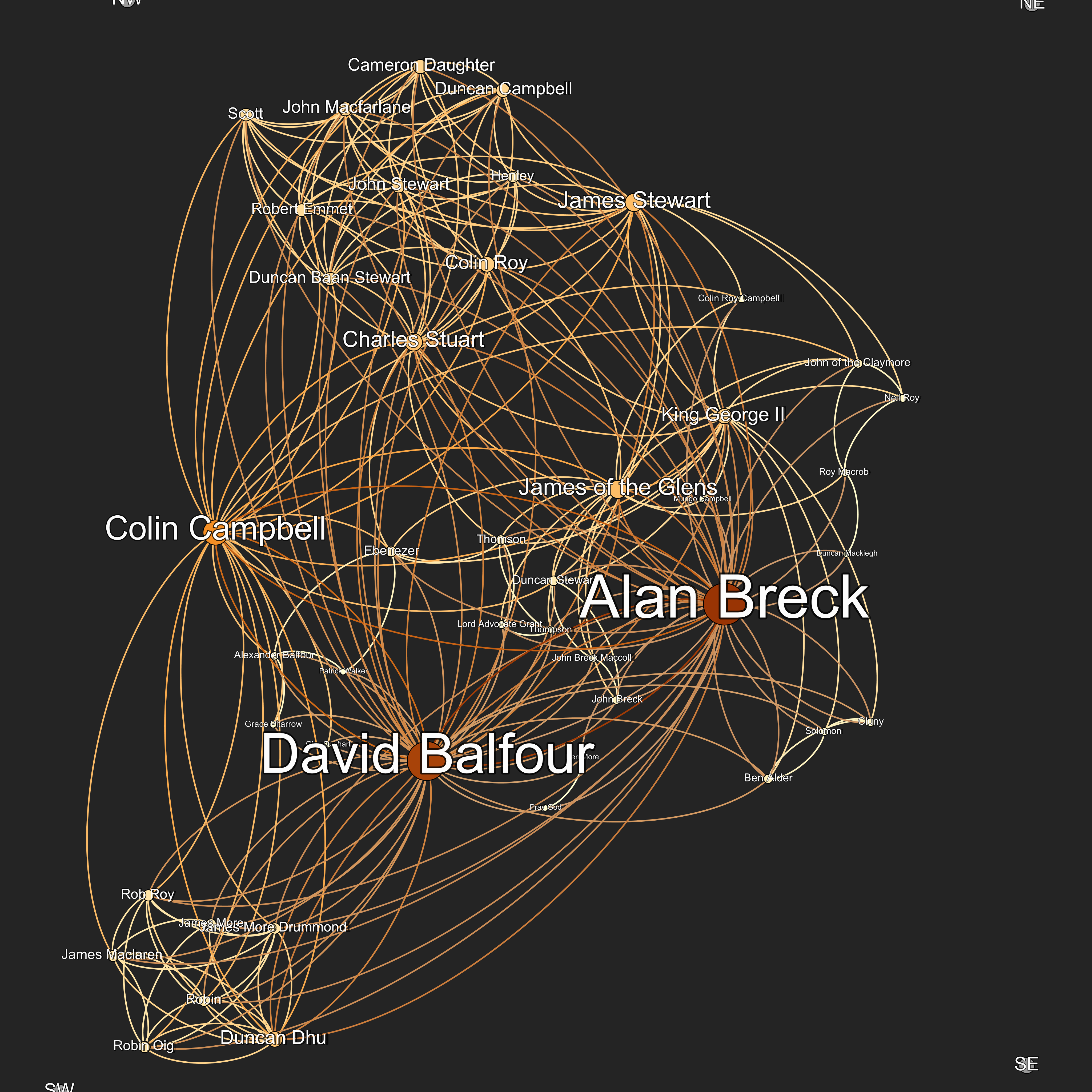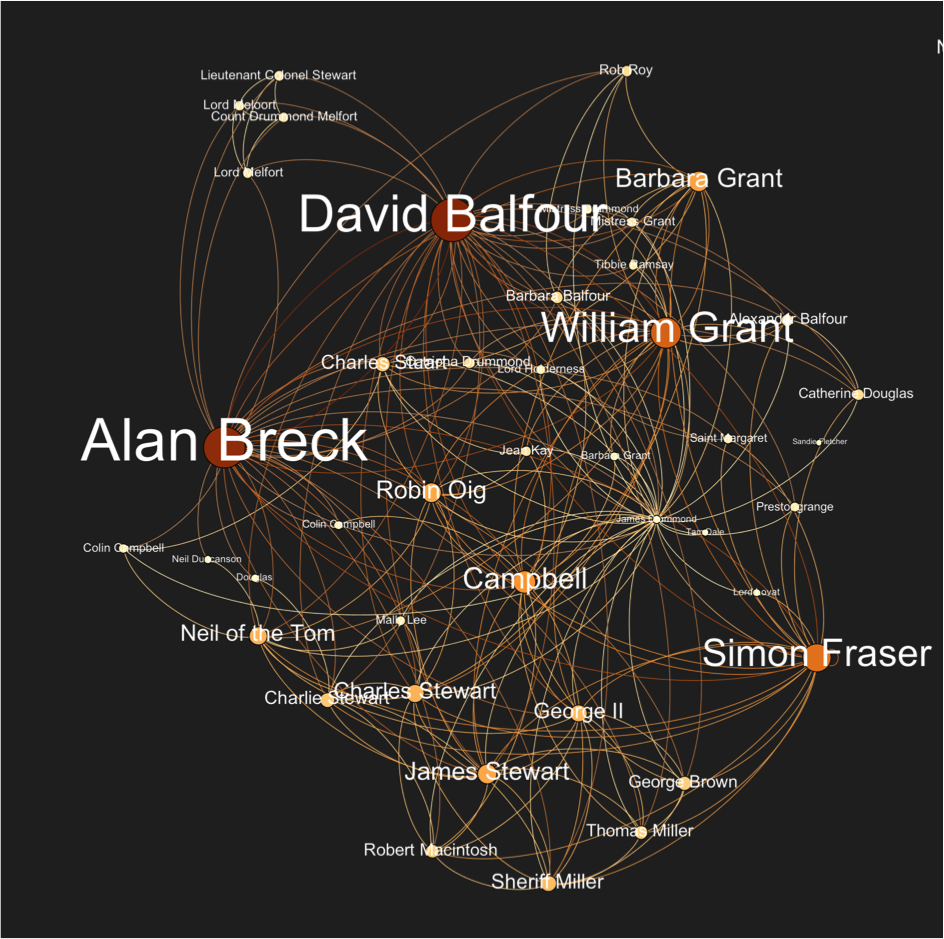I’m starting to work on my talk for the Seattle MLA on Stevenson, Oliphant, and Victorian constructions of the Scottish “Rising” of 1745. Of particular interest is the seven-year gap between Stevenson’s Kidnapped and Catriona — a sequel that picks up Kidnapped at the instant it closes. They are vastly different novels — the protagonist in each, David Balfour, is catapulted from a Highland Bildungsroman to a sensational romance and political intrigue novel, complete with radically different characterizations of David. I thought one way I might take a look at this is to examine the network of characters in each novel, as a way to focus upon large structural differences. (I used Gutenberg ebooks, translated into TEI xml using the XSLT transformations described in an earlier post, and the Meandre OpenNLP and Protovis implementations to perform entity extraction and produce the force-directed graphs, linking characters that appear within three sentences of each other):
Characters in Kidnapped (1886); Force-Directed Network Graph

Characters in Catriona (1893); Force-Directed Network Graph
The graphs largely confirm what might be expected; whereas Alan Breck plays a dominant function in “Kidnapped” — both as David’s companion and as the motive force of the plot, he is counterbalanced in Catriona by James Stewart (the man who will ultimately die in his place for the murder of Colin Campbell). In both texts, David, (as an explicit second and third-person character, rather than narrator), plays a peripheral role. But it is significant that David’s chief function in Catriona seems to be mediating the relationship between James Stewart and the juridical and social offices of the Grant family. Visually, in Catriona, Stewart’s capture by the Edinburgh-based agents of the Union maps onto his imbrication in the network of connections that represent the Hanoverian succession. It’s also interesting to note that Catherine Drummond (Catriona), appears much closer to James Stewart, due to her attempts to intercede with the Lord Advocate, than her own father, James More, a duplicitous agent for the crown.
Similarly, location analysis for Catriona paints a representative picture of the political space of the novel; France, as the location of Charles Stewart’s court in exile, emerges closer to both Scotland and the Highlands than England (locations that appear within fifteen sentences of each other are linked):

Locations in Catriona (1893); Force-Directed Network Graph
Compare this to the geopolitical network that appears in a Scotch novel written in the eighteenth century (Smollett’s Humphrey Clinker):

Locations in Humphrey Clinker (1771)
The density of the network in Humphrey Clinker (I actually had to reduce the window of connection for Smollett’s novel from 15 to 12 sentences because of the number of connections), emphasizes the international and even global character of polite culture in the late Enlightenment. At the center of the network, England, Scotland and Edinburg are closely coordinated in a fashion that suggests the easy grafting of the British Union on to the international dimensions of a culture of letters. For Stevenson, on the other hand, the project of historical inquiry into national origins serves to heighten and clarify national difference, both within and without Britain.
Ultimately, what these graphs emphasize, from my perspective, is how Stevenson draws a contrast between a lost cultural authenticity and the complicated commitments of modern society. Kidnapped dramatizes the romantic and unitary authenticity of highland culture through the almost exclusive focus on the relationship between a first person narrator and an exemplary character. In Catriona, the difficult negotiations of the marriage plot, and the effort to disengage Catriona from her connection to the ’45, model the problem of personal participation in political conflict, while David’s inability to affect the outcome of the Apin murder trial suggests an inherent skepticism toward individual agency outside of the domestic space. If being Kidnapped means escaping to find a reservoir of authentic behavior that can transform inheritance and perform maturation, in the latter novel, retreat to the companionate home is the only way to escape the violence that enforces the political and legal settlement of the Union.